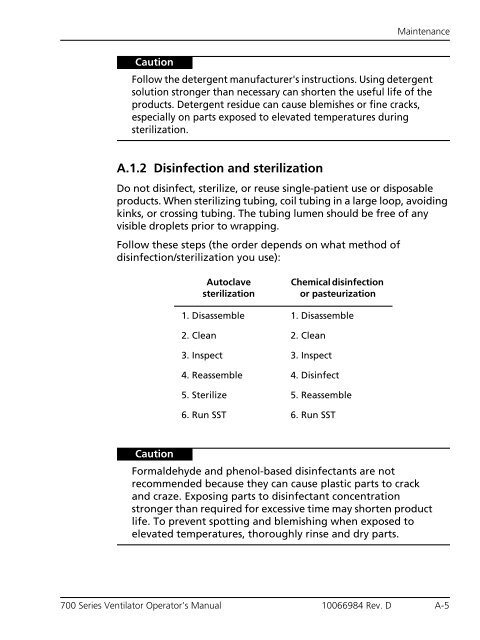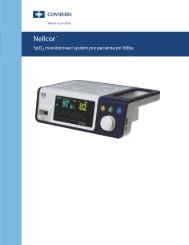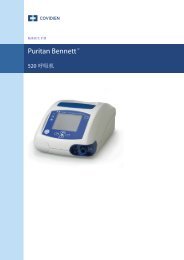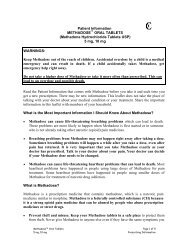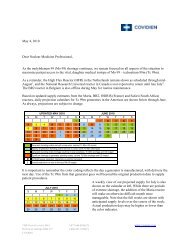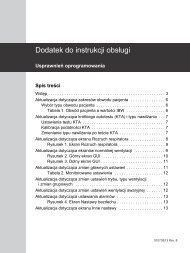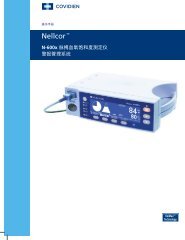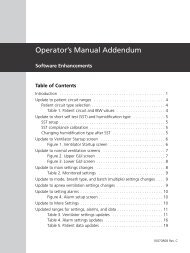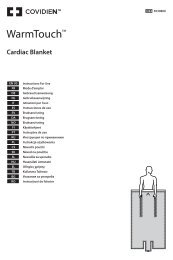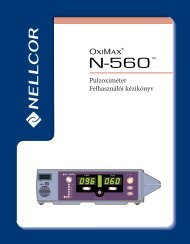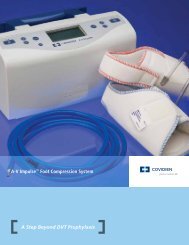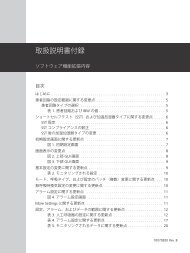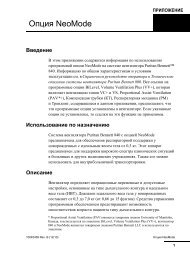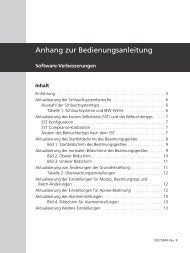Table of Contents - Covidien
Table of Contents - Covidien
Table of Contents - Covidien
Create successful ePaper yourself
Turn your PDF publications into a flip-book with our unique Google optimized e-Paper software.
Caution<br />
Maintenance<br />
Follow the detergent manufacturer's instructions. Using detergent<br />
solution stronger than necessary can shorten the useful life <strong>of</strong> the<br />
products. Detergent residue can cause blemishes or fine cracks,<br />
especially on parts exposed to elevated temperatures during<br />
sterilization.<br />
A.1.2 Disinfection and sterilization<br />
Do not disinfect, sterilize, or reuse single-patient use or disposable<br />
products. When sterilizing tubing, coil tubing in a large loop, avoiding<br />
kinks, or crossing tubing. The tubing lumen should be free <strong>of</strong> any<br />
visible droplets prior to wrapping.<br />
Follow these steps (the order depends on what method <strong>of</strong><br />
disinfection/sterilization you use):<br />
Autoclave<br />
sterilization<br />
Chemical disinfection<br />
or pasteurization<br />
1. Disassemble 1. Disassemble<br />
2. Clean 2. Clean<br />
3. Inspect 3. Inspect<br />
4. Reassemble 4. Disinfect<br />
5. Sterilize 5. Reassemble<br />
6. Run SST 6. Run SST<br />
Caution<br />
Formaldehyde and phenol-based disinfectants are not<br />
recommended because they can cause plastic parts to crack<br />
and craze. Exposing parts to disinfectant concentration<br />
stronger than required for excessive time may shorten product<br />
life. To prevent spotting and blemishing when exposed to<br />
elevated temperatures, thoroughly rinse and dry parts.<br />
700 Series Ventilator Operator’s Manual 10066984 Rev. D A-5


